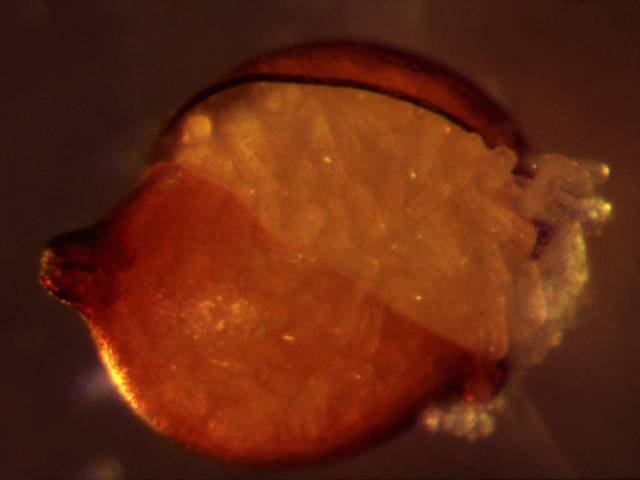Soybean Cyst Nematode: Experts Share How to Put SCN Soil Test Results Into Action
The SCN Coalition provides a variety of educational resources to help more farmers understand the importance of soil testing for actively managing soybean cyst nematode (SCN) — North America’s most damaging and costly soybean pathogen.
“A soil test is still the best place to start because knowing your SCN numbers helps determine the appropriate management strategies to implement for your fields,” says Horacio Lopez-Nicora, plant pathologist and nematologist with The Ohio State University.
Many farmers who took The SCN Coalition’s advice and followed their state recommendations to test soil for SCN are reviewing their results.
“The most commonly asked questions we get from farmers when they receive their SCN soil test results are about what the results mean and what to do with that information,” explains Dylan Mangel, plant pathologist with the University of Nebraska–Lincoln.
These experts with The SCN Coalition share what to consider when evaluating SCN soil test results and how to create a successful active SCN management plan based on the population levels detected.
Look at egg counts, not cysts
First, look at what life stage of the nematode is being counted and reported. Most report SCN egg counts, but some labs report cysts or juveniles. Within a cyst may be hundreds of eggs, which hatch into juveniles that move into the soil.
“Egg counts provide a more accurate assessment of SCN pressure in a field, despite the variability in soil test results,” Lopez-Nicora states. “Cysts tend to cluster and contain varying numbers of eggs, leading to significant fluctuations in soil sample outcomes. Thus, these results should be considered an approximate estimation of the actual SCN population in the field.”
If you receive results with cyst counts, simply multiply the number of cysts by 100 to convert to an estimate of eggs. This accounts for cysts of various ages containing a variable number of eggs in the soil sample.
When comparing soil sample results, make sure results are reported in similar soil volumes — most commonly 100 cm3 of soil.
Estimate yield and profit losses
Armed with SCN egg counts, farmers can use The SCN Coalition’s new SCN Profit Checker calculator to estimate how SCN is impacting yields and profits.
“Farmers, agronomists or crop advisors can use the new SCN Profit Checker to get an estimate of yield and profit losses from SCN per acre,” says Mangel. “Users input field-specific information, like the SCN egg count and SCN female index on PI 88788, and see an estimate based on expected yield and soybean price.”
Default female indexes on PI 88788 for most states are provided in the tool if that information is unknown. The SCN Profit Checker also considers a field’s sand content and soil pH, as these impact SCN reproduction and the management strategies that work best for a particular field.
Give the tool a try at scnprofitchecker.com.
Understand SCN population levels
While there is no “standard” SCN soil test result and each lab has its own reporting process, egg counts are often designated as low, medium or high levels.

SCN cysts contain 200 or more eggs when first formed. Juveniles hatch from the eggs and move into the soil, resulting in a variable number of eggs remaining.
“It’s important to keep in mind that what may be considered a high SCN egg count in some states is low or moderate in others, because different environmental factors like sand content and soil pH can impact SCN reproduction,” explains Lopez-Nicora.
Regardless of the SCN egg count, once detected, farmers should work with a trusted expert to develop a management plan. Mangel says it’s important to keep low SCN numbers low, considering SCN population densities can rise in a short amount of time.
“If left unmanaged, SCN populations can build up very quickly, increasing from hundreds to thousands in one growing season,” Mangel adds. “Even if SCN egg counts are zero, it’s possible that SCN is still in that field and was missed during sample collection.”
Implementing active SCN management strategies will help limit SCN population growth and new infestations, helping to protect future crops.
Build an active SCN management plan
Whether SCN egg counts are low or extremely high, there are proven management practices that help combat the damaging pest. An active management plan should include:
- Rotation of SCN-resistant soybean varieties
- Rotation to nonhost crops (corn, alfalfa, oats, etc.)
- Consideration of nematode-protectant seed treatments
The SCN resistance source known as PI 88788 dominates the SCN-resistant soybean varieties available today but is losing its effectiveness. Peking varieties have proven to be highly effective against SCN but should not be relied on as the only source of resistance.
Continually assess progress
SCN soil test results can also be compared to previous years and provide insights into the success of implemented management practices.
“In an ideal world, every farmer would test fields each time they come out of soybeans, but the best place to start is with those problem areas in fields with unexplained yield loss,” says Mangel. “It’s also just as important to know which fields don’t have SCN to avoid introducing it from infested fields.”
For farmers who haven’t tested their soil for SCN yet, there’s still time. Soil samples can be taken any time of year when the ground isn’t frozen, but typically the easiest time is in the spring before planting or in the fall after harvest.
The SCN Coalition provides state-specific recommendations from university experts about SCN management strategies and soil testing methods, as well as a list of public and private SCN testing laboratories.
Find more SCN management resources at thescncoalition.com.






